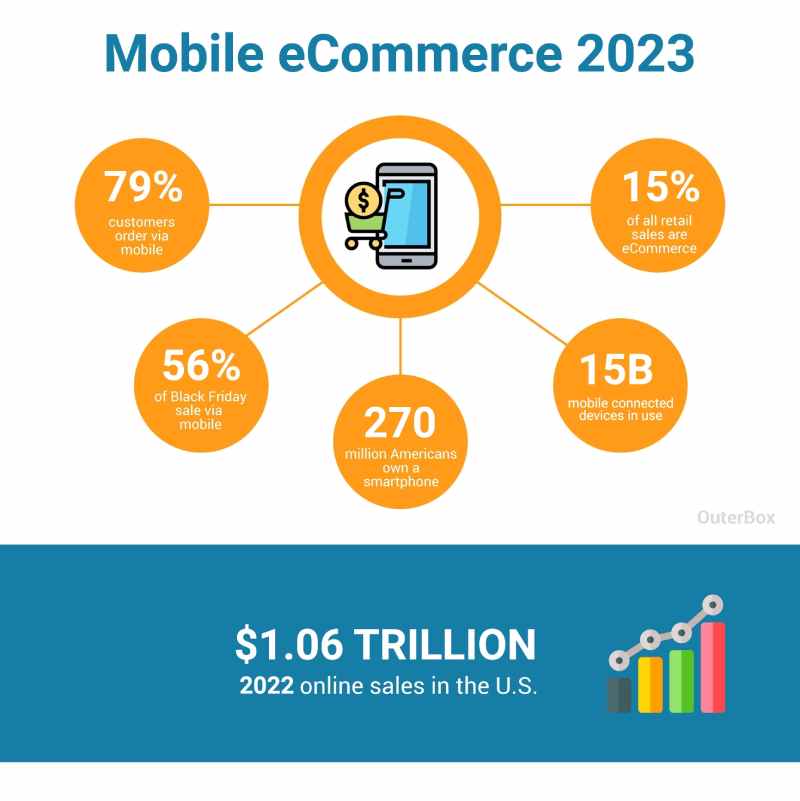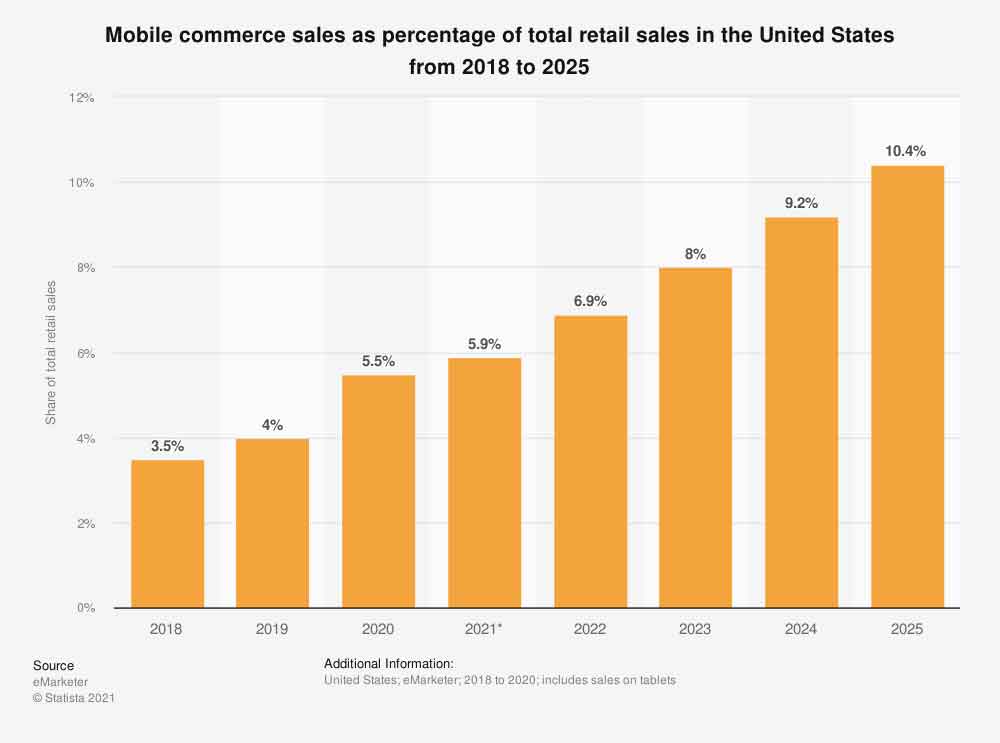Business Mobile Marketing with QR Codes depends on a little bit of understanding of the current Mobile market. All the below suggestions can be used with or without QR Codes
Maybe you don’t need me to tell you this one but we see people use them every day in a multitude of scenarios. Most of us use them every day for personal and business purposes.
Mobile device usage statistics for 2021 show that there are 5.22 billion users, which translates to more than 60%.
As we sit here today heading into 2023, mobile traffic and desktop traffic are both at a dead even 50%, meaning half of all website traffic is coming from a mobile device.
So let’s jump in and have a look at why you should use Business Mobile Marketing with QR Codes and generally for maximum exposure for your business.
Table Of Contents
- More stats to get you in the mood
- Your website needs to be mobile friendly
- Make use of local listings
- Business Mobile Marketing with QR Codes
- QR Codes to speed conversions and Track performance
- Apps VS Website
- Mobile Shopping and eCommerce QR Codes
- Conclusion
More Stats to Get You In The Mood
QR codes, or Quick Response codes, are two-dimensional barcodes that can be scanned with a smartphone or QR code reader to access information or a website. They are commonly used in marketing and advertising campaigns, as well as in other business applications such as tracking inventory and payment processing.

There are a number of statistics related to the use of QR codes in business:
- QR codes have been in use since 1994 and are used in a variety of industries, including retail, healthcare, and transportation.
- According to a survey conducted in 2020, about 46% of small businesses in the United States use QR codes as a marketing tool.
- In 2020, the global market for QR code-based mobile payment systems was valued at around $9.5 billion and is expected to reach $29.8 billion by 2025, growing at a compound annual growth rate of 25.6%.
- In 2020, QR codes were the most popular mobile payment method in China, with over 1 billion users.
- In the same year, QR code payments accounted for about 50% of all mobile payments made in India.
- In 2021, it was estimated that there were over 10 billion active QR code scans per month worldwide.
- At least 79% of smartphone users have made a purchase online using their mobile device in the last 6 months
- QR codes are particularly popular in Asian countries, where they are widely used for a variety of purposes including mobile payments, ticketing, and access control.
- The use of QR codes is expected to continue to grow in the coming years, as more businesses adopt them as a convenient and secure way to access information and facilitate transactions.
Your Website Needs To Be Mobile Friendly
It is generally important for businesses to ensure that their website is mobile-friendly, as more and more people are accessing the internet from their smartphones and tablets.
Having a mobile-friendly website means that it is easy to use and navigate on a small screen and that it is optimized for viewing on a range of devices, including smartphones and tablets. Some key considerations for making a website mobile-friendly include the following:
- Use a responsive design: A responsive design ensures that the website layout adjusts automatically to fit the screen size of the device being used. This is important because it ensures that the website is easy to use on a small screen and that all of the content is visible and easily accessible.
- Optimize images: Large images can take a long time to load on a mobile device, so it’s important to optimize images for the web by compressing them and using the appropriate file type.
- Minimize the use of pop-ups: Pop-ups can be annoying and can make it difficult to use a website on a small screen. It’s generally best to minimize the use of pop-ups or to design them in a way that they are easy to close on a mobile device.
- Use a clear and simple layout: A clean and uncluttered layout is important for making a website easy to use on a small screen. It’s also important to use clear and easy-to-read fonts and to ensure that the most important information is prominently displayed.
- Tap-Friendly: make sure all buttons, links and calls to action have the appropriate size and margin to prevent errors. Avoid URLs or small text as links as very hard to isolate on mobile, especially if more than one.
- Make sure all phone numbers are linked to your phone number so they can just tap and call. <a href=”tel:123-456-7890″>123-456-7890</a>
- Main Navigation: increase padding around menu items so it’s easy for the user to read and tap on menu items.
By following these guidelines, businesses can ensure that their website is mobile-friendly and easy to use for all users, regardless of the device they are using.
Make Use Of Local Listings
Most businesses are locally based with a percentage nationally and internationally focused.
Sites such as Yelp for Business, Bing Places for Business and Google My Business are key components in finding new customers and getting your name heard. Make sure your email, phone number and address, among others, are up to date.
Local listings are online directories that list information about local businesses, including their name, address, phone number, and other contact details. These listings are often used by consumers to find businesses in their local area, and they can also be a useful tool for businesses looking to reach a local audience.
Here are some ways that local listings can be used for mobile marketing:
- Claim your business listings: Make sure that your business is listed on local directories and review sites, and take the time to claim your listing and ensure that the information is accurate and up-to-date. This will help potential customers find your business and learn more about what you offer.
- Add your location to your website: If you have a website, make sure to include your business’s location and contact information on the site. This will make it easier for local customers to find you and get in touch.
- Use local SEO: Optimize your website and online content for local search terms, such as the name of your city or region. This will help your business show up in search results when people search for businesses in your area.
- Use location-based targeting: When running mobile ads, you can use location-based targeting to reach people who are in or near your business’s location. This can be an effective way to attract local customers and drive foot traffic to your business.
By using local listings and other mobile marketing strategies, businesses can effectively reach and engage with a local audience and drive more traffic and sales.
Business Mobile Marketing with QR Codes
QR codes, or Quick Response codes, are a type of barcode that can be scanned with a smartphone or QR code reader to access information or a website. They are commonly used in marketing and advertising campaigns, as well as in other business applications such as tracking inventory and payment processing.
Here are some ways that businesses can use QR codes for mobile marketing:
- Include QR codes on print materials: You can use QR codes on brochures, business cards, and other print materials to give customers an easy way to access your website or learn more about your business.
- Use QR codes in advertisements: You can include QR codes in advertisements, such as in print ads or on billboards, to give people an easy way to access more information about your business.
- Use QR codes on the product packaging: By including QR codes on product packaging, you can give customers an easy way to access product information, such as ingredients or care instructions.
- Offer special promotions or discounts: You can use QR codes to offer special promotions or discounts to customers who scan the code. This can be an effective way to drive traffic to your business and encourage sales.
By using QR codes in mobile marketing campaigns, businesses can effectively reach and engage with customers, and drive more traffic and sales.
QR Codes to Speed Conversions and Track Performance
Below are some ways you can maximize QR codes to monitor the performance of your marketing campaign properly:
There are a number of ways that you can use QR codes to monitor the performance of your marketing campaign:
- Track QR code scans: By using a QR code tracking service or app, you can track how many times your QR code has been scanned and see which marketing channels are driving the most traffic.
- Use unique QR codes: By using unique QR codes for different marketing channels or campaigns, you can track which QR codes are being scanned the most and which campaigns are performing the best.
- Use QR codes to gather customer data: You can use QR codes to gather customer data, such as email addresses or demographic information, which can be used to track the success of your marketing campaigns.
- Monitor website traffic: If you are using QR codes to drive traffic to your website, you can use analytics tools to track website traffic and see how many visitors are coming from QR code scans.
- Use QR codes to track sales: If you are using QR codes to drive sales, you can track the number of sales that are generated through QR code scans to see the ROI of your marketing campaigns.
- Send customers to a landing page/website: Scanning a QR code can lead to a signup page or any landing page/website. This removes the hassle of going using a URL that can get long. Make sure that you use a unique URL with your QR code to measure it accurately.
- Send a message: This is exciting because the user will only receive the message once the QR code has been scanned. Sending messages through QR codes benefits SMS marketing the most. It can be used for sales, user support, on-request product upgrades, and opt-in SMS registration.
- Download apps: Once you’ve scanned the QR code, it will direct you to the download page of the app and start the download. Businesses have used their creativity to make their QR codes eye-catching. Popular apps such as Angry Birds have used QR codes for their marketing campaign.
- View business location: If your website visitor wants to drop by your office, they can just pull out their phone and scan the QR code on your website. Instead of manually searching for the address on online maps, the QR code can give specific directions to your business location.
- Direct customers to social media pages: As an example, if a user liked your product or service so much, they can follow your social media pages for more updates. Sometimes, they can even score a discount or promo if they followed your social media through that same QR code.
- Shopping and E-commerce: Probably the most popular way to use QR codes, businesses usually use them for discounts and promos. By providing a unique QR code, the consumer can also receive the receipt or menu through his phone.
At the end of the day, QR codes benefit a lot of industries. Aside from saving time and energy, it also allows you to properly measure your marketing campaign, as QR codes provide the data that you need. They go through your system and can be further examined through your analytics. Naturally, you must set up the proper metrics such as location, time, and frequency to ensure the success of your promotional campaigns.
By tracking QR code scans and other metrics, you can get a better understanding of the effectiveness of your marketing campaigns and make any necessary adjustments to improve their performance.
Apps VS Website
Mobile apps and mobile websites are both designed to be accessed on a mobile device, such as a smartphone or tablet. However, there are some key differences between the two.
I did a recent survey and while people have many apps on their phones they tend to only use a dozen or so. To see if your app will be one it’s a good idea to survey your customers as responsive websites cater for all online services these days.
Also, there are now native apps on some platforms which do not require you to use generic storage companies and they also change when you change your website.
- Installation: Mobile apps must be downloaded and installed on a device, while mobile websites can be accessed directly through a web browser.
- Functionality: Mobile apps can offer a wider range of functions and features than mobile websites, as they have access to the device’s native functionality, such as the camera, GPS, and push notifications. Mobile websites are limited to the functionality provided by the web browser.
- Offline access: Mobile apps can work offline, while mobile websites require an internet connection to function.
- Updates: Mobile apps need to be updated through the app store, while mobile websites are updated automatically when the website is refreshed.
- User experience: Mobile apps can offer a more seamless and intuitive user experience, as they are designed specifically for mobile devices. Mobile websites may not be optimized for mobile devices and may be harder to navigate.
In general, mobile apps are a good choice for businesses that need to offer a range of functions and features, or for those that want to provide a native app experience to their users. Mobile websites are a good choice for businesses that need a simple and easily accessible presence on mobile devices, or for those with limited resources for developing and maintaining an app.
Mobile Shopping and eCommerce QR Codes

QR codes (short for Quick Response codes) are two-dimensional barcodes that can be scanned using a smartphone or QR code reader. In the context of mobile shopping and eCommerce, QR codes can be used to streamline the purchase process and make it easier for customers to complete transactions on their mobile devices.
Here are a few ways that QR codes can be used in mobile shopping and eCommerce:
- Payment: QR codes can be used to facilitate mobile payments. Customers can scan a QR code displayed at a physical storefront or on a mobile website to complete a payment using their mobile device.
- Product information: QR codes can be used to provide customers with more information about a product. Customers can scan a QR code on a product label or packaging to access additional details, such as ingredients or care instructions.
- Loyalty programs: QR codes can be used to track customer loyalty and reward customers for their purchases. Customers can scan a QR code at the point of sale to earn points or rewards, which can be redeemed for discounts or other perks.
- Event tickets: QR codes can be used to generate and distribute electronic tickets for events, such as concerts or sporting events. Customers can scan the QR code on their ticket to gain access to the event.
Overall, QR codes can help to make mobile shopping and eCommerce more convenient and efficient for both businesses and customers.

